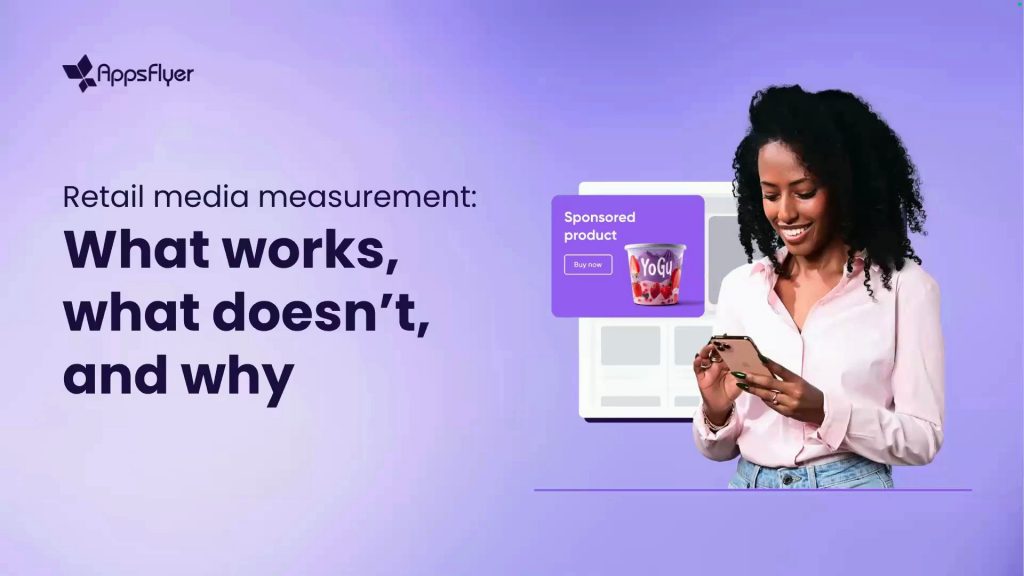
INTRODUCTION
Imagine setting sail without a compass — exciting, but fraught with uncertainty. That’s exactly how retail media networks (RMNs) can feel without the right measurement tools in place. In a fast-evolving space where every advertiser demands proof of ROI and actionable insights, accurate measurement isn’t just a bonus. It’s the anchor that keeps campaigns steady and successful.
Retail media is booming as brands are eager to capitalize on its unparalleled access to first-party data. eMarketer even argued that it is the “most important worldwide growth driver right now”, and is set to attract 22% of all digital ad spend in 2025!
But navigating this ecosystem isn’t straightforward. From fragmented methodologies to the walled garden effect, RMNs face unique challenges that can complicate their growth and credibility. That’s where this guide comes in.
Whether you’re just launching your retail media platform or scaling an established network, this guide will serve as your roadmap. Packed with practical insights, industry best practices, and real-world success stories, it’s designed to help you build trust with advertisers, optimize campaigns, and deliver measurable results.
So, let’s begin by tackling the most crucial question: why does measurement matter in retail media, why is it broken and how can it be fixed?
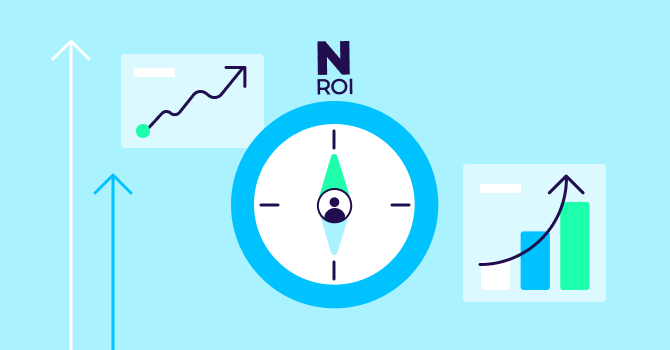
Why RMN measurement matters
Measurement is at the heart of retail media success. It’s how RMNs validate ad spend, build trust with advertisers, and unlock growth. With 68% of advertisers ranking higher ROI than other channels as the top reason to increase budgets, proving performance isn’t optional—it’s critical.
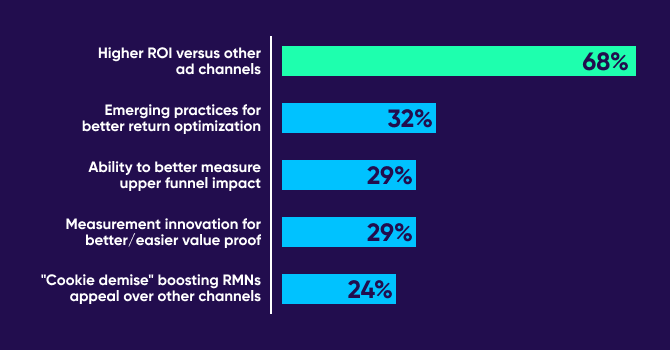
However, delivering on measurement isn’t simple. The IAB reports that 41% of advertisers feel RMNs lag behind other channels in measurement capabilities. Inconsistent standards, fragmented methodologies, and limited transparency in “walled garden” ecosystems make it harder for brands to compare performance and fully trust the data they receive.
So, what do advertisers need to feel confident? Here’s the checklist of essentials every RMN should deliver.
Must-haves for effective RMN measurement
Use case coverage
1) Omnichannel coverage & cross-platform attribution
Seamless measurement of user journeys across onsite, offsite (Meta, Google), in-store, and conversion attribution across mobile and web.
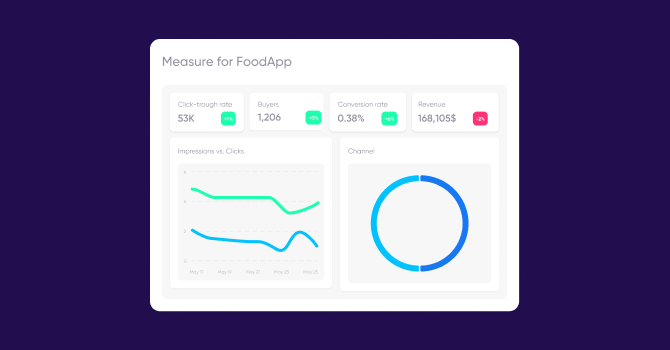
Precision
2) Deduplicated attribution
Ensure a unified dashboard for onsite and offsite campaigns with accurate, cross-channel deduplication.
3) SKU-level attribution
The ability to link ad spend directly to individual product sales for precise performance insights.
4) Lift measurement
Prove campaign-driven value by isolating incremental sales and engagement. In retail media, where purchase intent is high, lift measurement prevents overestimating performance and ensures accurate optimization.
Simplicity
5) Easy-to-access reports
Visualized dashboards that provide actionable insights in a simple format—no technical expertise or SQL knowledge required. Option of simplified export to brand’s/RMN’s own BI.
6) Timely insights
Always fresh reporting to allow for real-time optimization, rather than post-campaign summaries.
7) Wide and deep reporting
Comprehensive coverage across top, mid, and bottom-funnel metrics to show the full impact of campaigns.
⬇Download our cheat sheet on essential retail media KPIs here to ensure you’re measuring the right metrics at every stage.
Bonus point: Flexible attribution logic for tailored insights
Every campaign is unique, and so are its measurement needs. Offering adjustable attribution logic allows advertisers to align metrics with their specific goals—whether it’s customizing attribution windows, tracking cross-channel performance, or isolating incremental lift. This flexibility ensures brands can measure what matters most to them while gaining a clearer, more accurate picture of campaign success.

Finding the right influencers & channels
Setting the stage for a successful retail media campaign requires careful preparation and a clear understanding of your specific use case. This section will walk you through the key steps to ensure your RMN campaigns are ready to deliver measurable success—from defining your use case to consuming actionable insights.
Understand your use case
Before launching a campaign, it’s crucial to identify your use case. This depends on several dimensions:
- Activation type: Onsite (owned media) or offsite (third-party media like Google, Meta, DSPs, etc.).
- Management type: Managed (activated by RMN) or self-service activation (activated by brand).
- Conversion platform: Channel specific or cross-platform conversions.
- Conversion location: Conversion occurs on the RMN side or the brand side.
These dimensions determine the level of measurement detail possible. For instance, onsite campaigns with conversions on the RMN side enable user-level attribution, while when not approached correctly offsite campaigns often rely on aggregated insights provided by media platforms.
In such cases, the level of precision depends on the capabilities of the data collaboration platform used for measurement. Here’s a snapshot of how these combinations create 12 unique use cases:
- Onsite / Conversion on mobile app / Brand side: A brand placed an ad on the RMN mobile app. Users clicked on the ad, which redirected them to the brand’s app, where they completed their purchases.
- Onsite / Conversion on mobile app / RMN side: A brand placed an ad on the RMN mobile app. Users clicked on the ad, which led them to the product page within the RMN app, where they completed their purchases.
- Onsite / Cross-platform conversion / Brand side: A brand placed an ad on the RMN mobile app. Users clicked on the ad, which redirected them to the brand’s website, where they completed their purchases.
- Onsite / Cross-platform conversion / RMN side: A brand placed an ad on the RMN website and app. Users clicked on the ad on the website, which redirected them to the brand’s website to complete their purchases.
- Offsite / Self-serve / Conversion on mobile app / Brand side: A mobile app utilized RMN data to create segments and launch campaigns on Meta. Users on Meta clicked the ads and were directed to specific locations within the brand’s app, where they completed the target action, such as registration.
- Offsite / Self-serve / Conversion on mobile app / RMN side: A brand leveraged RMN data to target segments and launch campaigns on Meta. Users on Meta clicked the ads and were directed to specific locations within the RMN’s app, where they completed the purchase of the brand’s product.
- Offsite / Self-serve / Cross-platform conversion / Brand side: A brand leveraged RMN data to create segments and launch campaigns on Meta. Users on Meta clicked the ads and were directed to the brand’s website to complete the purchase.
- Offsite / Self-serve / Cross-platform conversion / RMN side: A brand leveraged RMN data to create targeted segments and launch campaigns on Meta. Users on Meta clicked the ads and were directed to the RMN’s website to complete the purchase of the brand’s product.
- Offsite / Managed / Conversion on mobile app / Brand side: An RMN activated a campaign on Meta to drive conversions on the brand’s mobile app, such as installs.
- Offsite / Managed / Conversion on mobile app / RMN side: An RMN activated a campaign on Meta to drive sales of the brand’s products on the RMN’s app.
- Offsite / Managed / Cross-platform conversion / Brand side: An RMN activated a campaign on Meta to drive sales on the brand’s website.
- Offsite / Managed / Cross-platform conversion / RMN side: An RMN activated a campaign on Meta to drive sales of the brand’s products on the RMN’s website.
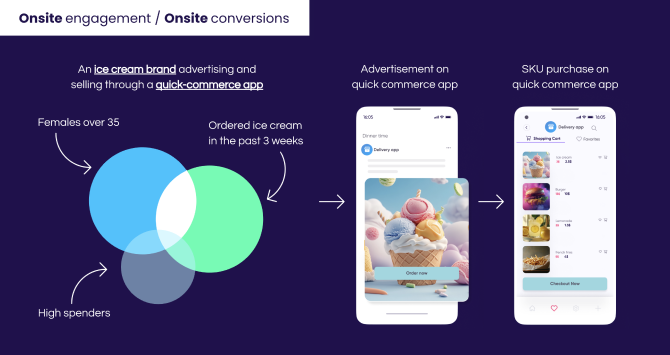
Select a measurement partner
Understanding your use case helps you ask the right questions when choosing a measurement partner—typically a data collaboration platform. The key factor is whether your use case enables user-level data insights, which ensure precision, unbiased attribution, and deduplication. Why you need a data collaboration platform for measurement:
- Connecting data sets owned by different parties
Engagement data comes from the ad platform, while conversion and mapping data belongs to the party where the conversion happens (e.g., the RMN or the brand). A data collaboration platform bridges these datasets, allowing to run the attribution process while ensuring business privacy. - Enabling user-level precision
User-level data ensures precise, unbiased, and deduplicated measurement. Most platforms struggle to access this data in walled gardens—except AppsFlyer. As both a measurement provider and a data collaboration platform, AppsFlyer has unique access to user-level insights from walled gardens, guaranteeing the highest measurement accuracy.
Prepare your data
Think of retail media measurement as a well-balanced tripod—supported by three essential components: engagement data, conversion data, and campaign mapping. Each plays a critical role in delivering accurate, actionable insights.
- Engagement data. Engagement data comes from the platform where the campaign is activated — be it onsite or offsite on channels like Google, Meta, TikTok, or DSPs, or both.
- Conversion data. Conversion data is sourced from the party responsible for facilitating the conversions—whether it’s the retailer itself or the brand. This data provides the other half of the story, capturing the results of campaign activity.
Campaign mapping. This dataset links the campaign_id to the brand it belongs to and its conversion targets, typically SKUs.
With your data in place, it’s time to configure the measurement platform and start getting the insights.
Share insights with your brand partners
The final step in retail media measurement is all about making insights actionable and accessible — not just for you, but for your brand partners. Reports should be easy to understand, visually clear, and flexible enough to meet different needs.
Here’s what makes a great reporting experience:
- Visualized simplicity. Clean, easy-to-read dashboards help marketers quickly grasp key metrics, without wading through complex data tables or relying on data science teams. Visual insights save time and make decision-making faster.
- Export options. Allowing governed report exports in multiple formats ensures partners can integrate the data into their own systems or workflows, making collaboration seamless.
- Deep-dive insights. While surface-level dashboards are great for quick overviews, the ability to dig deeper through customizable queries lets advanced users uncover specific trends or address unique questions.
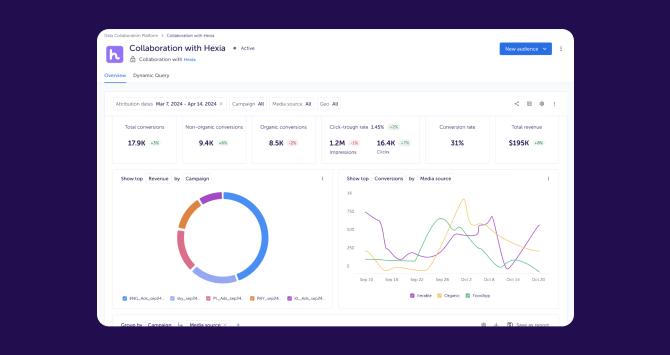
By sharing clear, flexible, and actionable reports with your brand partners, you strengthen the relationship and drive smarter campaign optimizations together. After all, the best insights are the ones everyone can use.

Best practices that build trust and drive ad revenue
To ensure successful campaign measurement and maximize trust with your brand partners, follow these best practices:
- Set clear expectations upfront
Before launching a campaign, align with your brand partners on their goals and the KPIs that will best represent them. Confirm with your measurement partner that these KPIs are measurable within the platform to avoid surprises later. - Rely on user-level insights
User-level data is essential for precise measurement. Unlike aggregated data, it ensures accurate attribution, unbiased insights, and deduplication across both onsite and offsite campaigns. - Leverage SKU-level measurement
When relevant, connect ad spend to individual product sales with SKU-level attribution. This granularity not only provides detailed performance insights but also builds confidence in campaign ROI. - Run lift analysis for incremental uplifts
Prove your campaign’s unique value with lift analysis. In onsite retail media, users are already motivated to buy, making it crucial to separate organic from ad-driven conversions. In offsite media, where intent is lower, lift analysis reveals the true impact of your ads. - Adhere to industry KPI standards
Ensure consistency in how metrics like conversion rate are calculated, following standard industry practices to make reports clear and comparable. - Offer data verification
Trust is critical. With onsite activation, RMNs control engagement data, and brands often question the accuracy of impressions calculations. This lack of transparency can erode confidence. To address this, offer your brand partners the option to use third-party tools, such as the AppsFlyer SDK, which has access to engagement data in mobile app environments. These tools enable independent verification of engagement metrics, ensuring accuracy and building trust between RMNs and advertisers. - Simplify the brand experience
Make data and insights easy to consume. Provide visualized dashboards that require no technical expertise or SQL skills, and ensure reports are delivered without delays for timely decision-making.
By implementing these best practices, you’ll foster trust with your brand partners, improve campaign performance, and set a strong foundation for long-term collaboration.

How Wolt Ads achieved measurement excellence
Wolt Ads, part of the global food and retail delivery leader DoorDash, supports brand advertisers with retail media solutions across 29 markets. With over 42 million registered users, Wolt Ads set out to establish itself as a go-to platform for impactful, data-driven campaigns.
To meet advertiser demands and scale its retail media solutions, Wolt Ads needed to:
- Deliver comprehensive reports that link ad spend directly to sales.
- Streamline operations with tools that reduce dependency on technical resources.
- Provide a privacy-centric solution that ensures data accuracy and trust.
By leveraging AppsFlyer’s Data Collaboration Platform (DCP), Wolt Ads unlocked critical capabilities:
- Efficiency & scale
With onsite activation and conversions happening directly on Wolt, data operations were simplified. As an existing AppsFlyer customer, Wolt benefited from seamless access to all required data for measurement, enabling quick and effortless campaign execution. - Accurate measurement
AppsFlyer’s DCP provided end-to-end attribution, connecting ad spend to sales with SKU-level granularity. This level of precision ensured advertisers could see exactly how campaigns drove results.
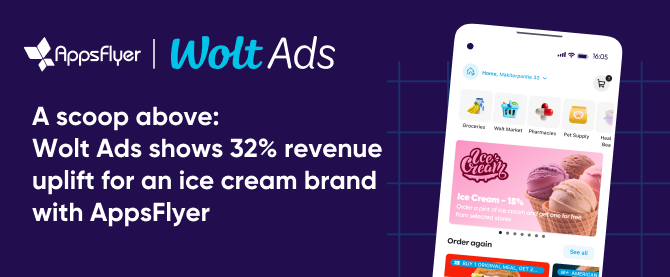
The results of the partnership were impressive:
- 32% Revenue Uplift: Campaigns using AppsFlyer’s DCP outperformed those without by a significant margin.
- 4x ROAS: Return on ad spend far exceeded expectations.
- 159% Penetration Rate Increase: The campaign expanded the ice cream brand’s audience reach.
- 148% Category Share Uplift: Enhanced targeting and personalization led to category dominance.
We had a really easy way to offer custom, bespoke audiences, and we could measure everything easily within the same platform. That end-to-end experience, along with the results, proves that this truly delivers value for our partners.
Catalina Salazar,Head of Wolt Ads
With these results, Wolt Ads is now equipped to scale its retail media offering across all 29 markets, driving measurable outcomes for its partners and strengthening its position as a trusted retail media network.
Key Takeaways
Retail media measurement is the foundation for building trust with advertisers and driving campaign success. Here are the key points to keep in mind:
- Measurement drives ad revenue
With 68% of advertisers ranking ROI as their top priority, proving performance is critical. Transparent and accurate measurement validates ad spend and strengthens advertiser relationships. - User-level data is essential
Campaigns fueled by user-level data provide precise attribution, unbiased insights, and deduplication—key for both onsite and offsite activations. This level of detail ensures confidence in campaign outcomes. - Flexibility and granularity matter
Flexible attribution logic and granular insights, such as SKU-level measurement, empower brands to tailor campaigns and focus on metrics that truly reflect their goals. - Simplify the experience to meet brand expectations
RMNs, while complementing traditional media, also compete with it. Brand-side marketers are accustomed to the seamless, self-service reporting provided by major media players, making retail media’s often resource-intensive nature a challenge. To remain competitive, RMNs must simplify the experience for brands by offering intuitive, easy-to-use reporting tools and reducing operational complexity. This ensures that retail media remains a highly valuable yet accessible strategy for advertisers. - Preparation sets the stage for success
Defining your campaign use case and aligning data—engagement, conversions, and mapping—ensures your campaigns are set up for measurable success.
By implementing these practices, retail media networks can not only build trust with advertisers but also demonstrate their value, ensuring sustained growth and long-term partnerships.




